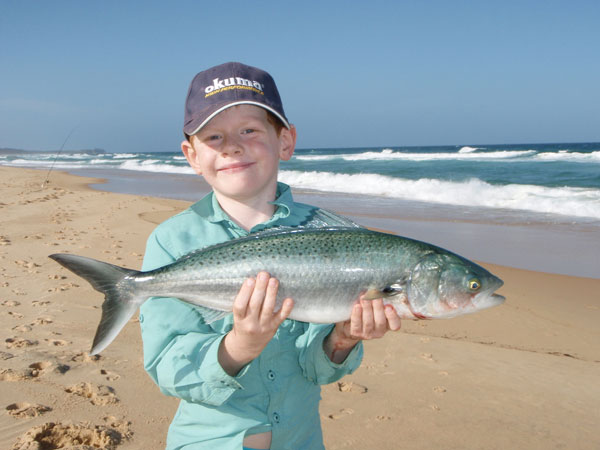Knowing how to find a suitable gutter for beach fishing is an important and vital skill that will definitely improve your chances of success on the sand.
OF all the different location types to fish, many anglers find beaches to be one of the more difficult to pick “the right spot”. When looking at the vast expanse of a beach several kilometres long, it can certainly seem difficult to determine precisely where you should fish.
Consequently, many anglers head down to the spot closest to the car and go for it. And it’s no surprise that many of these anglers end up fishless. But a different story could be told if they’d surveyed the water and maybe walked up for down the beach for a few kilometres.
Anyone who has had even the remotest exposure to beach fishing will have heard the term “gutter”. So what’s a gutter? When a wave pushes water into the beach and breaks or dumps, the excess water deposited needs to go somewhere. It generally exits via the path of least resistance by shifting sand at the weakest point. When this action is repeated wave after wave a channel is eventually formed. The shifting sand is in turn deposited in places where the force of the waves and current reduces. The deeper water is called a “gutter” and the shallow section is known as a “sand bank”. Where the waves hit the beach is known as the “shore break”. These are the key features of a beach and the reasons why the fish are there – or not there, as the case may be. The waves are formed by the wind often far out to sea. The force and direction of the wind at the time the waves were created determines the size and orientation of the swell when it hits land.
So what are you looking for? Once you develop an eye for a decent gutter, it will become plain as day but each one can be very different. Some are channels running parallel to the beach, others are a bit like an indentation, some are like a long finger coming into the beach at an angle. Generally speaking, you want to fish in the gutter and therefore in the deepest water. Where the water is dark in colour and the waves are not breaking at the crest means deeper water or a “gutter”. Shallow water is usually signified where waves consistently break at the crest and continue to do so over a patch of lighter coloured water. A good gutter is a substantial patch of dark coloured water (within casting range) in between or flanked by sandbanks. The style of gutter is less important than the fact that you are fishing in the deepest water available.
It is crucial you understand that the wave’s action and subsequent formation of the gutters is the reason why the fish are there. The waves and current dislodge food and distribute it. Where it is dislodged and deposited is where you will find the fish. If it is a beautiful calm day and there is minimal wave action, the chances are there will be minimal fish too. You need the swells to create the conditions that attract the fish.
Here’s the thing that prevents the average angler from being consistently successful at beach fishing. The incessant action of the waves and currents means that the shifting and depositing of sand is constant. For this reason, the most productive “spot” on a beach will be changing all the time as the sand shifts and the gutter moves up or down the beach. You need to be able to identify that gutter each time. Some people just go back to the same spot, often because that’s where they had caught fish before. Sometimes the orientation of the swell can fill all gutters in, meaning no productive fishing spots at all. As such, you need to be familiar with several beaches in case your favourite one doesn’t have a decent gutter.
The state of the tide also plays a part. For example, if a sandbank is under a metre of water at low tide and is creating decent wash, it may not be much good at high tide when there will be another metre and a half of water over it. Conversely, a reasonable gutter at high tide may be little more than a tiny drain at low tide. You need to consider the state of the tide for the duration of the time you intend to fish.
The best place to look for a gutter is from an elevated position, such as a cliff, top of a sand dune or a headland. A high vantage point gives you a better overall perspective of the size and formation of any gutters and whereabouts in that gutter might be the best place for you to fish.
Also, try and check out several beaches during the middle of the day. The more options you give yourself, the greater your chances at success. Pick the beach and the spot that looks the best for the tide you will have at the time you intend to fish it. Keep in mind that the tide will be different and you need to allow for this.
Remember that even though there are exceptions to all these statements, if you find the deepest gutter on the beach and fish it properly then you have firmly stacked the odds in your favour.
Next issue we’ll look into what to do when you’ve found that awesome gutter.

















